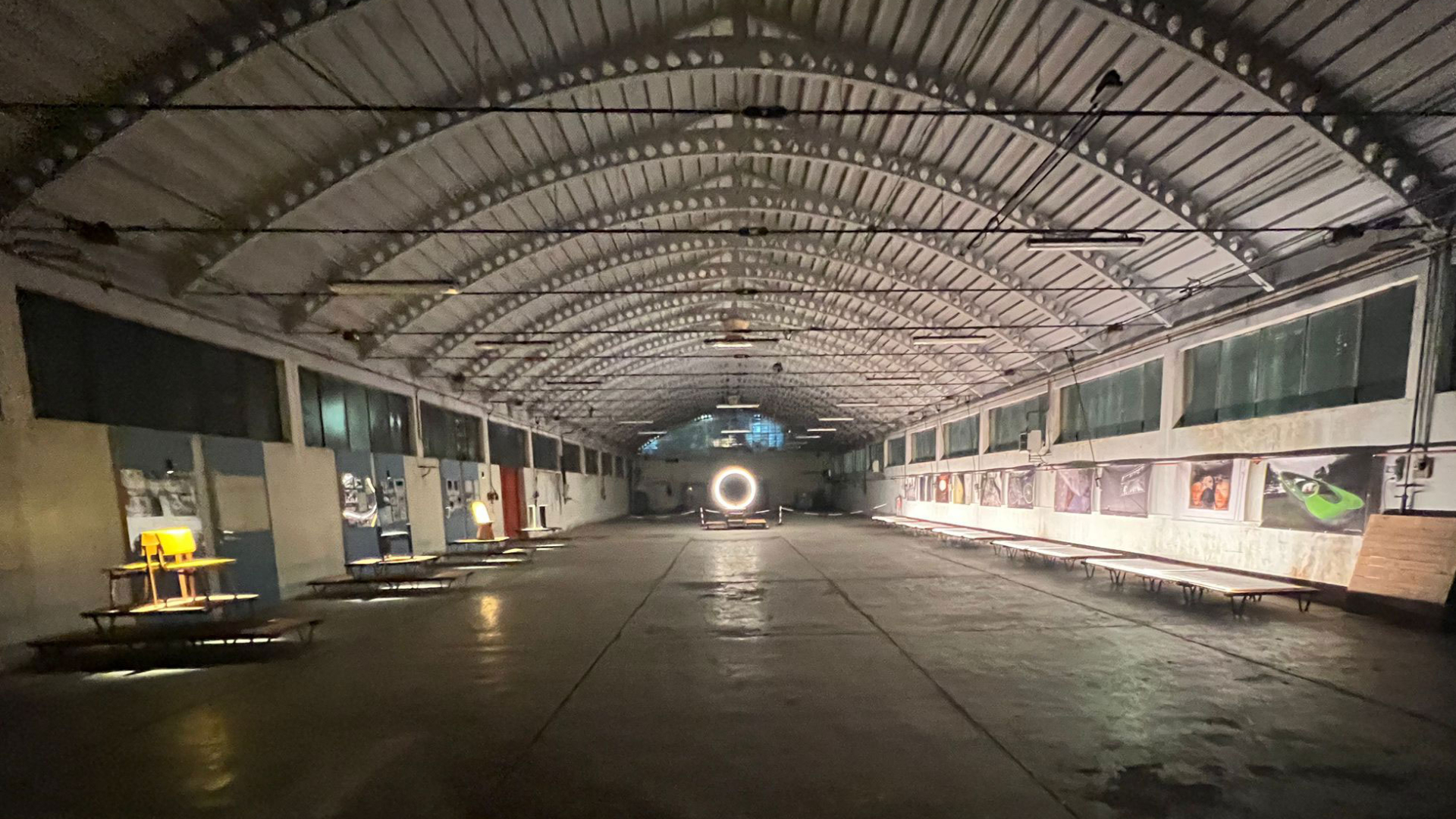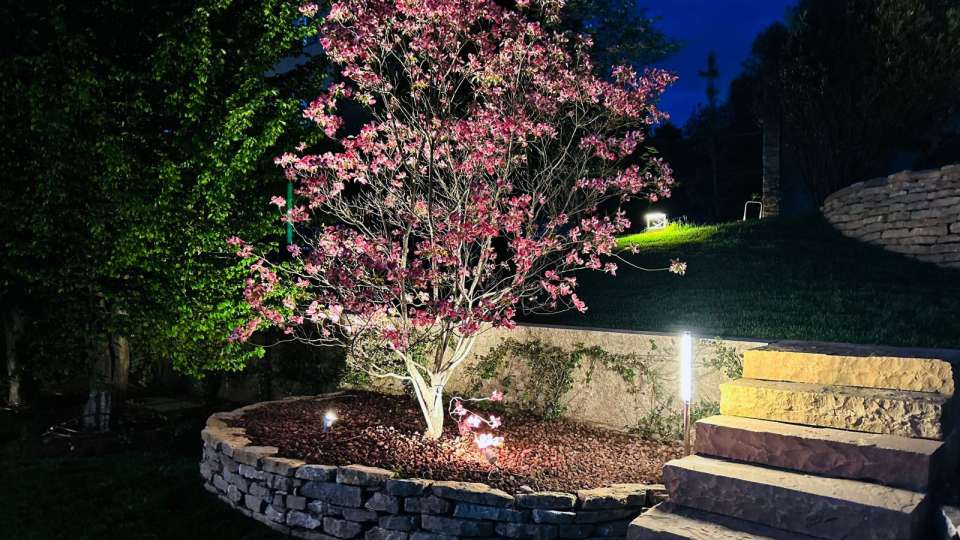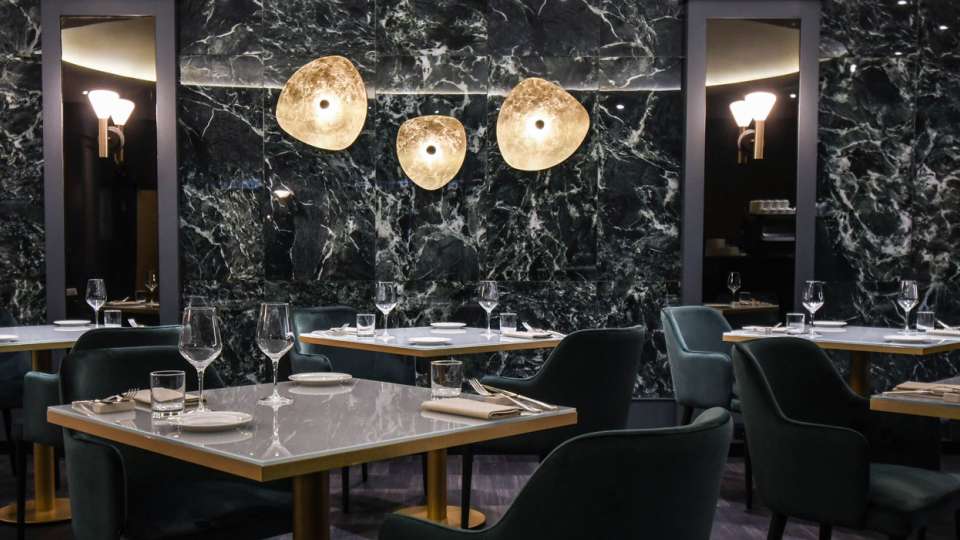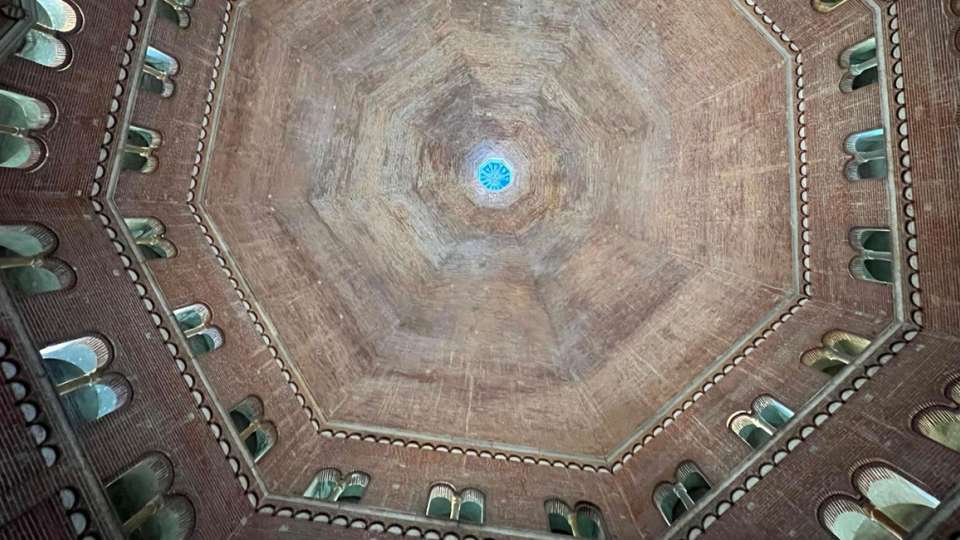
Lighting in exhibition spaces is a crucial element in enhancing the exhibits and ensuring an immersive visitor experience. Proper lighting design should not only highlight the details of artwork but also protect exhibits from damage caused by prolonged exposure to light.
In this article, we will explore the different types of lighting systems, the importance of choosing the right colour temperature, and the appropriate light intensity to ensure the correct visibility of the exhibits.
Spotlights are the most common and versatile solution in museums, especially art galleries. They can be used for directing light onto individual work or details, without uniformly illuminating the whole room. Thanks to their flexibility, they allow the intensity and angle of the light beam to be adjusted, creating light and shadow effects that can emphasize textures, shapes, and depth.
They allow maximum flexibility, as the spotlights can be moved along the track, varying the angle and intensity of the light.
Integrated directly into the ceiling these spotlights can provide discreet, clean lighting without visual clutter. They are ideal for creating focused illumination on works without distracting the visitor.
Floor lamps are used to create ambient lighting or to accentuate areas. They are less intrusive than spotlights and often add an aesthetic touch to the exhibition. With their ability to direct light upwards and downwards, floor lamps can illuminate large sculptures or installations without creating harsh shadows.
They are perfect where a soft, diffuse light is needed that does not disturb the perception of artwork.
Wall lamps diffuse indirect light that enriches the atmosphere of the room without directing beams of light onto the work. They are good for transit areas or diffuse illumination of large exhibitions with sculptures or installations.
Suspension lamps are an interesting choice for lighting exhibition spaces because they can provide both direct and indirect lighting, creating unique atmospheres and accentuating the architecture of spaces.
These lamps emit light downwards, focusing directly on specific works of art or exhibition areas. They are ideal for illuminating sculptures, interactive stations, or special points of interest.
They distribute light upwards or sideways, creating a diffuse effect that illuminates the room more evenly. This type creates pleasant background lighting that does not directly interfere with the artwork.
In addition to their illuminating function, these lamps can also serve as a decorative element. In some exhibition spaces, especially in design or contemporary art exhibitions, the lighting can become an integral part of the exhibition narrative.
Besides the choice of lamp type, temperature plays an essential role in the perception of work.
Warm Light (2700K - 3000K)
Creates an intimate and cozy atmosphere, suitable for classical or historical artworks. However, it can distort the original colours of the artwork.
Neutral Light (3500K - 4000K)
Ideal for a natural colour vision, this colour temperature is perfect for most exhibitions, balancing light and hue realistically.
Cold Light (5000K - 6500K)
This day-like white light is perfect for highlighting technical details or modern works of art without altering colours but may be too cold for some historical or classical exhibitions.
Management of lumens is essential to prevent intense light from deteriorating delicate works of art. Light sensitivity varies greatly depending on the material, thus it is important to adapt the lighting to the characteristics of each work.
50 - 100 lumens/m² for susceptible materials
Works on paper, photographs, old manuscripts, and textiles require very low brightness, as these materials are sensitive to light. Prolonged exposure to high light levels may cause irreversible fading and deterioration.
100 - 200 lumens/m² for paintings and delicate works of art
Paintings on canvas or board, as well as other less sensitive materials, can tolerate a slightly higher level of light. However, moderate brightness is still recommended to avoid long-term effects such as colour fading or pigment breakdown.
200 - 300 lumens/m² for resistant works
Sculptures made of stone, metal, and robust materials such as ceramics and glass can be illuminated with stronger light without risking damage. In these cases, stronger light can also enhance structural details and textures.
More than 300 lumens/m² for large exhibition areas or modern installations
In some spaces, such as large halls or exhibitions with contemporary installations, a higher lighting level may be required to bring out the whole scene. However, even in this case, it is important to consider whether the work is exposed to a risk of deterioration.
Lighting in museums and exhibition spaces must strike the right balance between aesthetics, functionality, and conservation. Different lighting solutions must be chosen according to the specificity of the exhibition to protect and enhance the works of art. Investing in a well-designed lighting system improves both the conservation of exhibits and the visual experience of visitors, making each exhibition unique.

Outdoor lighting is much more than the simple act of installing a few fixtures around your home, it’s an art form that blends safety, functionality and ambiance into your garden, patio or poolside retreat. When done thoughtfully, the right light can transform any outdoor space into an enchanting extension of your living area: an inviting evening lounge, a dramatic backdrop for al fresco dinners or a quietly illuminated path that guides you home.

Lighting plays a key role in interior design, not only as a matter of functionality, but also because of its ability to transform spaces and influence our mood. New lighting trends in colour and materials focus on warm tones, bold combinations and advanced technologies.

Lighting inside a sacred space is an essential aspect that defines the environment, enriches the spiritual experience and inspires a deep emotional involvement in those who enter it. Light, in all its forms, symbolically represents divinity and inner guidance in sacred places. Its use must be studied with particular care to respect the sacredness of the place, enhance spirituality and accompany the faithful on an inner journey.